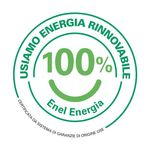Asbestos-free sheared gaskets in Milan
In order to achieve a flawless result, the gasket material must be sufficiently compressible when the parts are assembled so that, once applied, it can easily fill all spaces, including the slightest irregularities. The greatest strength of these gaskets lies in their ability to withstand large compressive loads, as pressures of up to 14 MPa can be reached in industrial applications. Turn to I.M.G.T., the company that has been providing customers with specific and exclusive expertise to create customised solutions at competitive prices for over fifty years.
Seals applicable to any surface
The material chosen to make the gasket must meet certain essential characteristics: - It must be soft enough to adapt to surfaces. - It must not be chemically damaged by the fluid to be contained. - It must not corrode the surfaces with which it comes into contact. - It must be able to withstand the operating temperature, whether high or low. - It must resist the pressure of the fluid to be contained without deforming. If used in dynamic seals, it must produce little friction and wear as little as possible. Gaskets are used to join mechanical parts which do not fit together perfectly.
The gasket can - compensate for irregularities in the bearing area due to the manufacturing process - compensate for flatness defects on large surfaces - prevent a reduction in tightness over time - enlarge the contact surface between the two elements If the gasket is sufficiently compressible, or if its thickness can be adjusted, it can provide a calibration space for the fixing distance of the two elements. This is very important for endothermic reciprocating engines, giving the possibility of fine-tuning the coupling of e.g. (cylinder/base or cylinder head/cylinder). - FASTENING GASKETS - Asbestos free - Neoprene®- Dutral®- Canvas rubber- Foam rubber- Silicone- Vulkollan®, Adiprene®- Felt- Graphite- Polythene, Nylon- Cork; P. T. F. E. GASKETS
State-of-the-art machinery
I.M.G.T. has a fleet of state-of-the-art machines that can carry out precision work efficiently and on time. For moulding, both injection and compression machines are used, in order to be able to mould any elastic material.
Call now












